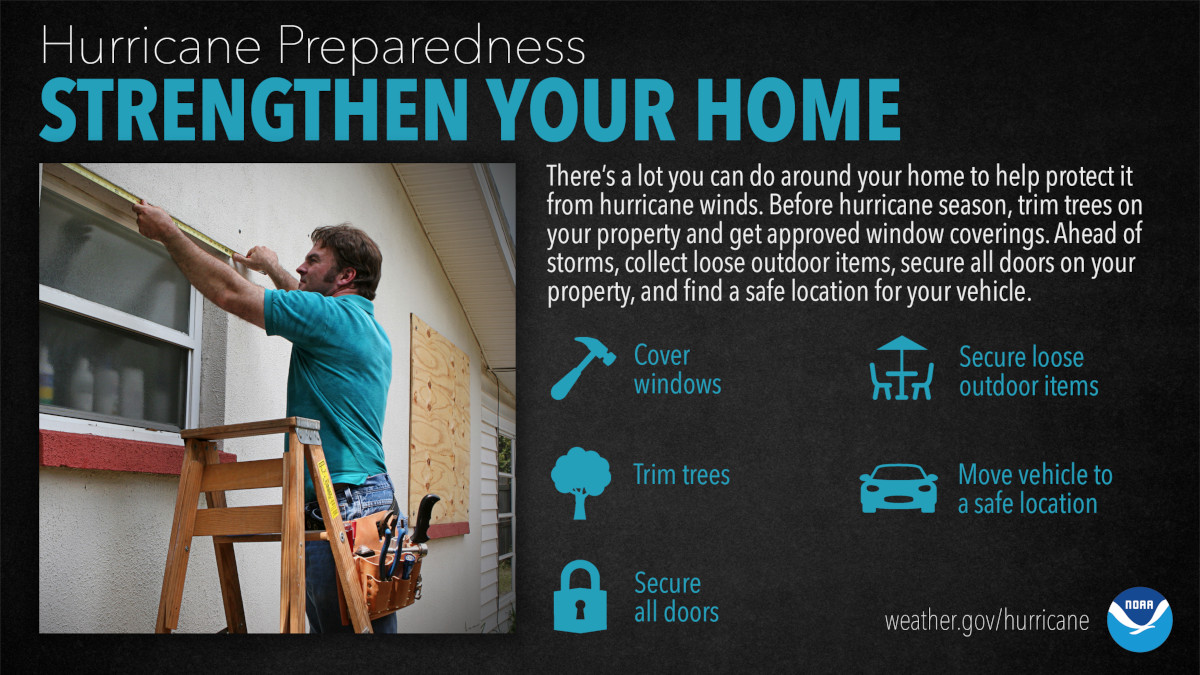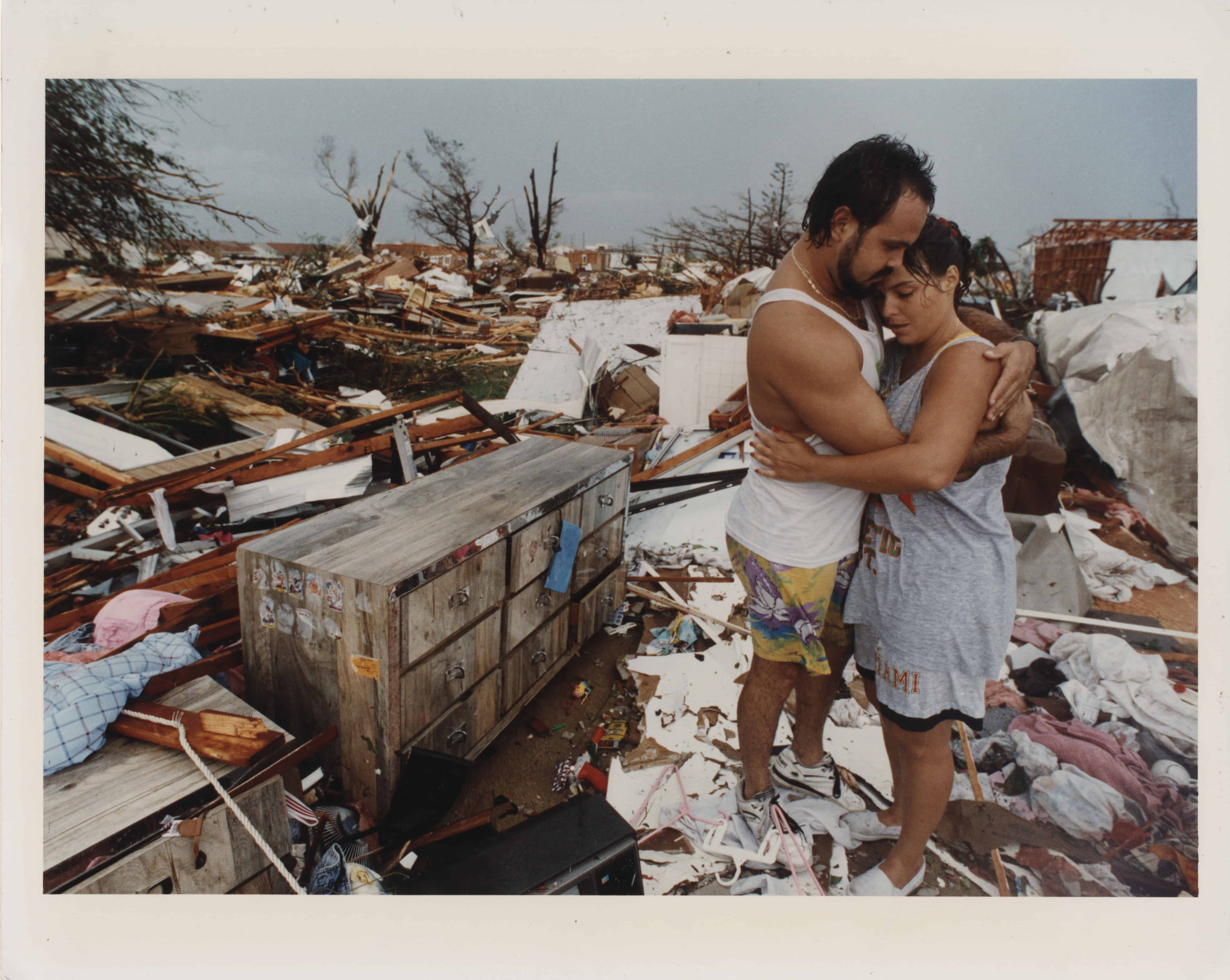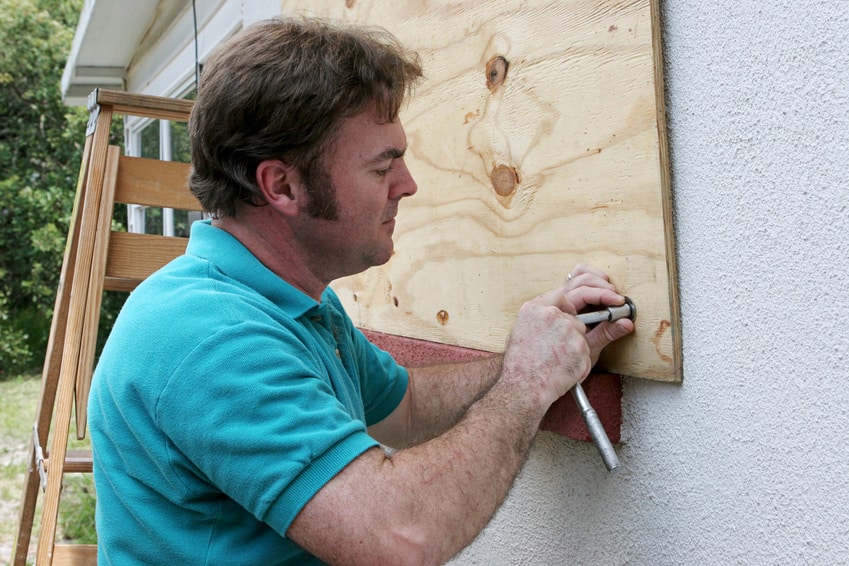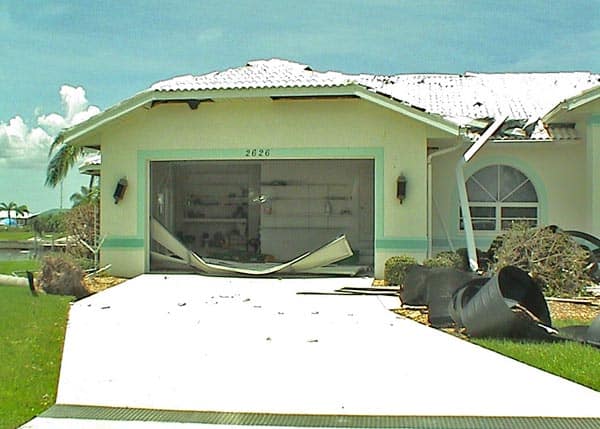How to Prepare Your Home for a Hurricane

Hurricane Preparedness Articles
- 7 Step Hurricane Preparedness Plan
- Hurricane Hazards and Risk Factors
- Make a Hurricane Evacuation Plan
- Hurricane Preparedness Kits and Supplies
- Hurricane Insurance Checkup and Updates
- Prepare Your Home for Hurricanes
- Help Neighbors with Hurricane Preparedness
- Complete Your Hurricane Preparedness Plan
- Emergency Preparedness Tips
- How to Prepare for a Power Outage
- 10 Tips to Survive a Hurricane Disaster
- FEMA Recommends a Generator
- Hurricane Disaster Preparedness
Prepare Your Home for Hurricane Season
A house is the largest single investment many people will ever make and it’s important to protect that investment however possible. Hurricanes are the largest, most powerful storms on earth and arrive with devastating consequences for homes and people caught unprepared.
Widespread evacuations saved thousands of lives in August of 1992 when Hurricane Andrew made landfall in Homestead Florida as a relatively small, but powerful category-5 storm. The hurricane destroyed entire neighborhoods, leaving only concrete foundations and piles of rubble. Only those homes with reinforcement remained in the aftermath. Dramatic photos told the story of large trailer parks completely leveled by the storm. In all, Hurricane Andrew destroyed a total of 25,000 homes and left 100,000 severely damaged.
Not every hurricane that makes landfall is a category five, but a large hurricane can have tropical storm force winds over an area up to 1200 miles in diameter. Adherence to building codes, especially in coastal communities, protects most homes from the extreme winds.
The takeaway: Homes built before newer building codes require reinforcement upgrades to prevent destruction by high winds.
Read Hurricane Preparedness: Know Your Risks - Make Your Plans
After Andrew, the Florida legislature enacted new building codes for compliance across the entire state.
Reinforce House Roofs and Framing
 When the high winds of a hurricane enter a home through a window, door, or other opening, the pressure inside the home builds and becomes much higher than the pressure outside. The wind over the top of the home creates lift due to the difference in pressure. The roof behaves like the wing of an airplane and attempts to lift off the home.
When the high winds of a hurricane enter a home through a window, door, or other opening, the pressure inside the home builds and becomes much higher than the pressure outside. The wind over the top of the home creates lift due to the difference in pressure. The roof behaves like the wing of an airplane and attempts to lift off the home.
One the roof is gone, the building structure loses its integrity and the result is often a complete loss. Older building codes only required nails to hold a roof to the outside walls. Newer codes implemented a systems of metal ties, often called hurricane ties, that connect all the components of the building together and anchor them to the foundation.
 Like an airplane secured to the ground with straps, the wind can’t lift the roof off the house. Hurricane ties protect the entire structure because at each point, the wind loads are transferred through the structural framing down to the foundation. The house remains intact even if the shingles are ripped away—a much less expensive repair than replacing an entire home.
Like an airplane secured to the ground with straps, the wind can’t lift the roof off the house. Hurricane ties protect the entire structure because at each point, the wind loads are transferred through the structural framing down to the foundation. The house remains intact even if the shingles are ripped away—a much less expensive repair than replacing an entire home.
After new building codes were implemented in 2002, a study performed by the University of Florida following four subsequent hurricanes—Charley, Francis, Ivan, and Jeanne—determined that homes built under the new codes sustained less damage during a hurricane. Another report by the Florida Legislature in 2005 following Dennis, Katrina, and Wilma came to a similar conclusion.
Builders who specialize in mitigating structural framing can reinforce an existing home to meet current building codes and protect it from wind damage. Consider having your older home inspected and brought up to date to current building codes. Ask for an inspection on newer homes to confirm that the building adheres to current building standards.
Protect Windows and Doors
 Covering windows, doors, and other openings prevents debris from breaking windows. Wind can't push the doors open. By keeping the wind out, the pressure inside remains similar to the pressure outside, preventing the wind from generating lift on the home's roof.
Covering windows, doors, and other openings prevents debris from breaking windows. Wind can't push the doors open. By keeping the wind out, the pressure inside remains similar to the pressure outside, preventing the wind from generating lift on the home's roof.
Everyone is familiar with images of homes covered with plywood. Homeowners purchase 1/2 to 3/4-inch plywood sheeting at lumberyards and home centers, cut it to size, and secure it over each window. The preferred method for wood framing utilizes lag bolts with washers. Masonry requires the use of permanent anchors. After cutting to size and drilling for fasteners, labels mark the plywood panels for each window before storage until the next storm.
Note: OSB is 30 percent less resistant to impact than plywood.
 In the days and hours leading up to a hurricane, local supplies run short and homeowners are left with less optimal choices. Preparation well in advance is key to minimizing damage. Make your panels before the season starts. Florida's Division of Emergency Management has a guide to DIY Shutter Options, including plywood panels, and how to install them.
In the days and hours leading up to a hurricane, local supplies run short and homeowners are left with less optimal choices. Preparation well in advance is key to minimizing damage. Make your panels before the season starts. Florida's Division of Emergency Management has a guide to DIY Shutter Options, including plywood panels, and how to install them.
Hurricane shutters provide another option to consider. After Hurricane Andrew, the State of Florida instituted testing methods for window and door coverings. The standard test for a projectile is a 9-pound 2x4 impacting on end at 34 MPH. There are various types of shutters and awnings to consider that keep wind, debris, and water out of the home.
Adding commercial shutters at the last minute as a storm approaches is probably not an option. Purchase and have them installed in advance.
Standard sliding patio and overhead garage doors are without doubt the weakest opening in any home. The large doors carry a tremendous wind load over a wide area. One buckled garage door panel or loss of a sliding door is all it takes. Once wind gains entry to the garage or home, the roof becomes vulnerable.
For garage doors, an impact and wind resistant door is the best option. Replace sliding doors with hurricane-rated sliding doors or install wind and impact resistant shutters.
Keeping the Power On
 FEMA, the Federal Emergency Management Agency, issued a release in 2011 recommending homeowners consider a generator for backup power. The best option for homeowners is a standby generator. Home Renters can use a portable generator, and Portable Power Stations make good options of apartment and condominium dwellers. Hurricanes devastate local power grids, leaving communities and rural areas without power for days or even weeks. A backup source of power is essential.
FEMA, the Federal Emergency Management Agency, issued a release in 2011 recommending homeowners consider a generator for backup power. The best option for homeowners is a standby generator. Home Renters can use a portable generator, and Portable Power Stations make good options of apartment and condominium dwellers. Hurricanes devastate local power grids, leaving communities and rural areas without power for days or even weeks. A backup source of power is essential.
Portable Generator Safety Rules to Live By
Danger: Never connect a portable generator to the house wiring by plugging it into an appliance outlet. Back-feeding a house with a generator this way is dangerous and in many areas against the law. If you plan to connect a portable generator to your home, install a manual transfer switch or have a qualified electrician do it for you.
On the downside, when the power goes out, someone must go outside and set them up, often in inclement weather. Fill them with fuel, start them, and then run extension cords indoors. They require refueling at regular intervals and in the days and weeks after a hurricane, fuel is often difficult to purchase.
Recommended Portable Generators for Hurricane Preparedness
A standby generator protects your home and family 24/7. They can supply power to the entire home or only to selected circuits. Permanent connections and automatic operation coupled with natural gas or propane fuel protect your home even if you are away. Seconds after a power outage hit, the lights are back on and your home and family have the power they need. No worry about refrigerators, freezers, or sump pumps. You can charge your cell phone or watch television for news updates about the storm.
Standby generators operate on natural gas or propane. Unless the natural gas supply is interrupted, the generator has a nearly inexhaustible supply of fuel.
Sump pumps
Depending on what part of the country you live in, you may or may not have a basement, finished basement, or crawlspace.
Basements and lower levels need a sump pump, even if no groundwater seepage exists. During the torrential rains associated with tropical storms and hurricanes, the ground becomes saturated until it can’t hold any more water. A sump pump in a pit collects water from the ground before it goes under the basement slab, usually through a system of drainage tiles. This prevents water from entering the basement and the sump pump sends it outside and away from the home.
A backup pump that runs off a battery is one alternative. These keep up for three to seven hours before the battery runs out. After that, another source of power is required. Make certain your Portable Generator can power the pump in addition to your other needs. Small Home Generators should connect the sump pump circuit in the automatic transfer switch. A Generator with Load Shedding Power Management should prioritize the sump pump circuit.
Make Your Property Hurricane Safe
Don’t neglect the rest of your property when preparing your home for a hurricane. Your yard is a possible source of damage if it contains anything the wind could move.
Start with your trees. Have a tree care professional do an inspection. Remove any dead limbs, broken branches, or portions that are weak due to rot. Large trees with small, shallow root systems are vulnerable and pose a danger to your home and others homes adjacent to your lot.
Plan to clear your yard ahead of a hurricane and know where you will store everything. Lawn and patio furniture. BBQ grills. Toys. Play sets. Anything that isn’t securely anchored down should have a place indoors. Inspect sheds for the same type of construction improvements required on your home. Anchor the frame securely to the concrete slab and anchor the roof frame to the wall frame. Cover windows with plywood sheathing.
Storm Shelters and Safe Rooms
 Safe rooms and storm shelters provide protection from extreme winds and flying debris. Even if your home is built to current building codes, consider reinforcing an interior room for additional protection. Keep in mind that safe rooms and shelter rooms won’t protect you from storm surge or flooding.
Safe rooms and storm shelters provide protection from extreme winds and flying debris. Even if your home is built to current building codes, consider reinforcing an interior room for additional protection. Keep in mind that safe rooms and shelter rooms won’t protect you from storm surge or flooding.
Remember that below grade rooms—basements or levels that are partially below ground—may flood during torrential rains or from coastal flooding and storm surge.
Even if you don’t intend to build a safe room, choose a room in the interior of your home without any adjacent exterior walls. Use this room to store your emergency supplies and plan to move everyone there if you are riding out the storm.
No matter what safeguards and plans you put in place, if your home is within an area ordered to evacuate, or given the option to evacuate, pack your family, the pets, and your emergency disaster kit and leave as soon as your home is ready.
Weather Radio
Equip your home with an NOAA Weather Radio. Choose one with dual power options to run on batteries or plug into a wall receptacle. Additional power options are also available.
An NOAA weather radio can alert you to approaching weather in your area. It includes Hurricanes, Tornadoes, floods, and other severe storms and weather. It receives broadcasts from the National Weather Service on warnings, watches, forecasts, weather observations and other hazard information 24 hours a day. It also broadcasts alerts of non-weather emergencies such as national security, natural, environmental and public safety (such as an AMBER Alert) through the U.S. Federal Communications Commission's (FCC) Emergency Alert System.
The average cost of $30 to $50 dollars with more and less expensive models. An NOAA Weather Radio is well worth the cost no matter what part of the country you live in.
Choose the “In Stock” Filter option for Portable Generators or Standby Generators that ship within days.
Updated May 7, 2025
